The first day
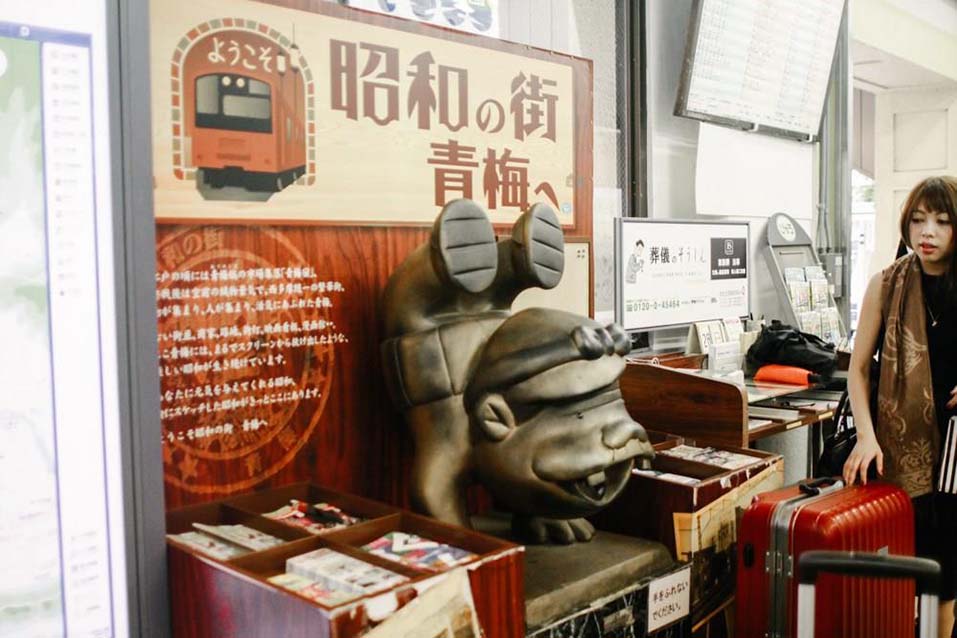
The Genius Dad Doll at Ome City Station
My buddies and I, dragging our luggage, hopped on the swaying train and arrived at Ome City. As soon as we got off the train, we could see the famous manga master, Osamu Tezuka, also known as the genius dad, Akatsuka Fujio's doll.
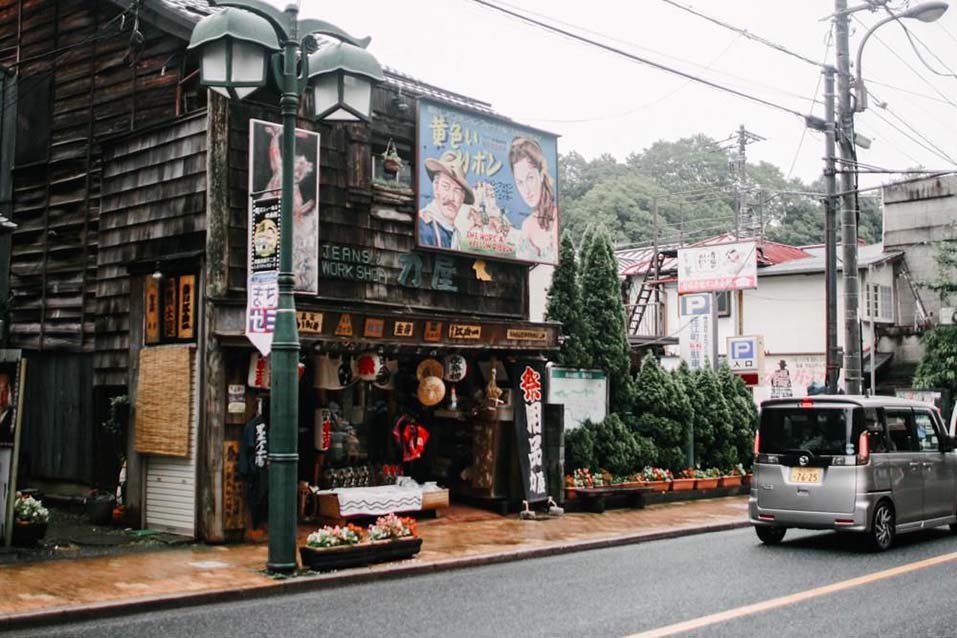
The ancient and tranquil town
In this quiet town nestled in the mountains, as you look around, the streets are lined with ancient Japanese wooden houses and vintage movie posters from bygone eras. Yes, painted ones – handcrafted, hand-painted movie posters. In the past, printing technology was not as advanced as it is now, and movie posters were hand-drawn. Ome City preserves many handcrafted posters of famous movies, using them to embellish and decorate the ancient streets.
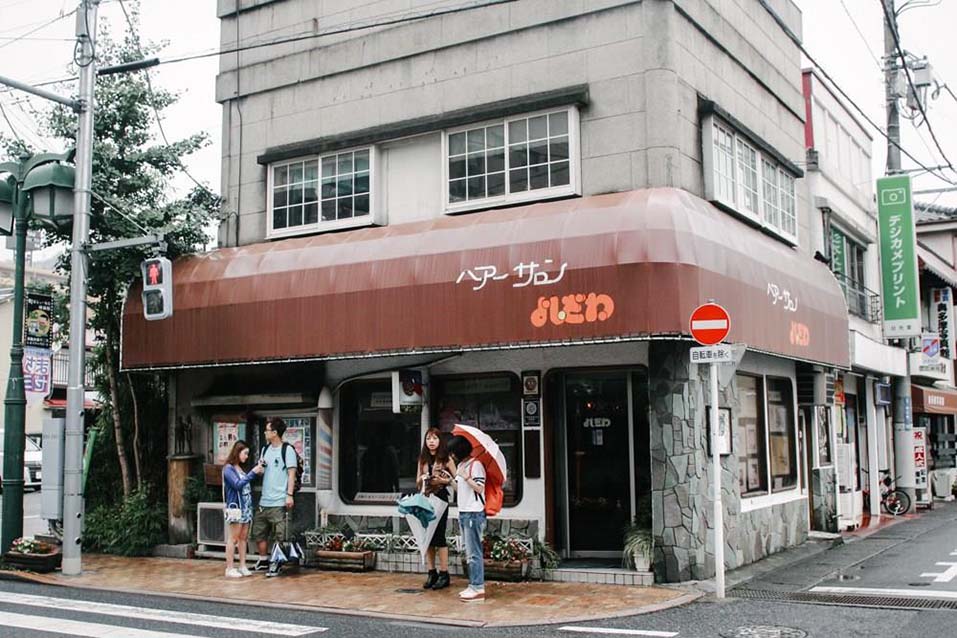
It feels like stepping into an old movie
It's like traveling through a tunnel of time to the Showa era; every turn around the street corner feels like stepping into an old movie. Everywhere was a perfect spot for girls to take pictures. My friend and I ended up playing along this main street for half an hour, even though the museum we wanted to visit was less than ten minutes away from the station.
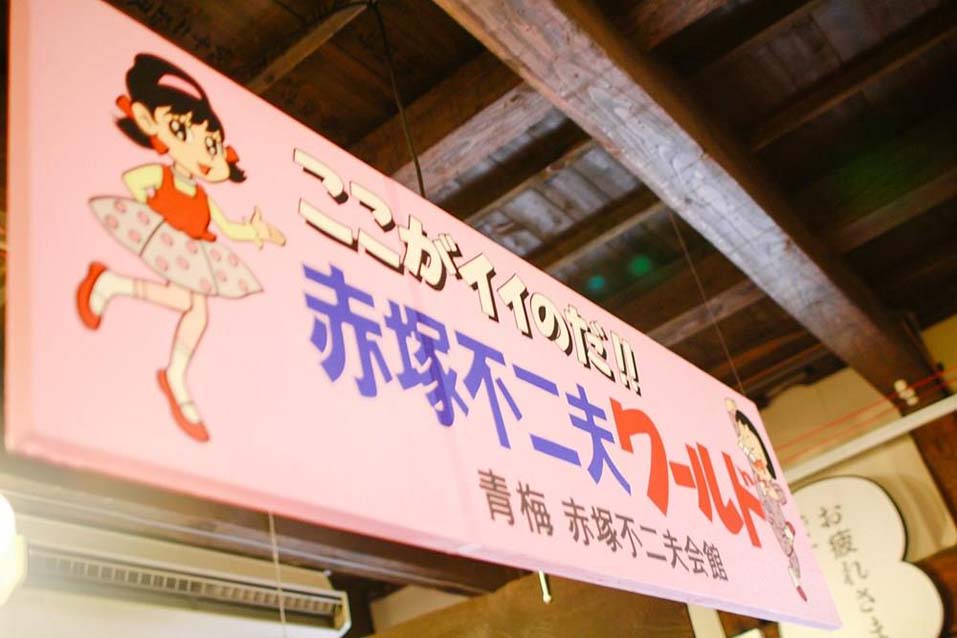
The Akatsuka Fujio Museum
In addition to the vintage streets, Ome City is home to three distinctive museums: the Akatsuka Fujio Memorial Museum, Showa Retro Museum, and Showa Denko Pavilion. I highly recommend everyone to visit and explore these museums. The most important one is undoubtedly the Akatsuka Fujio Museum.
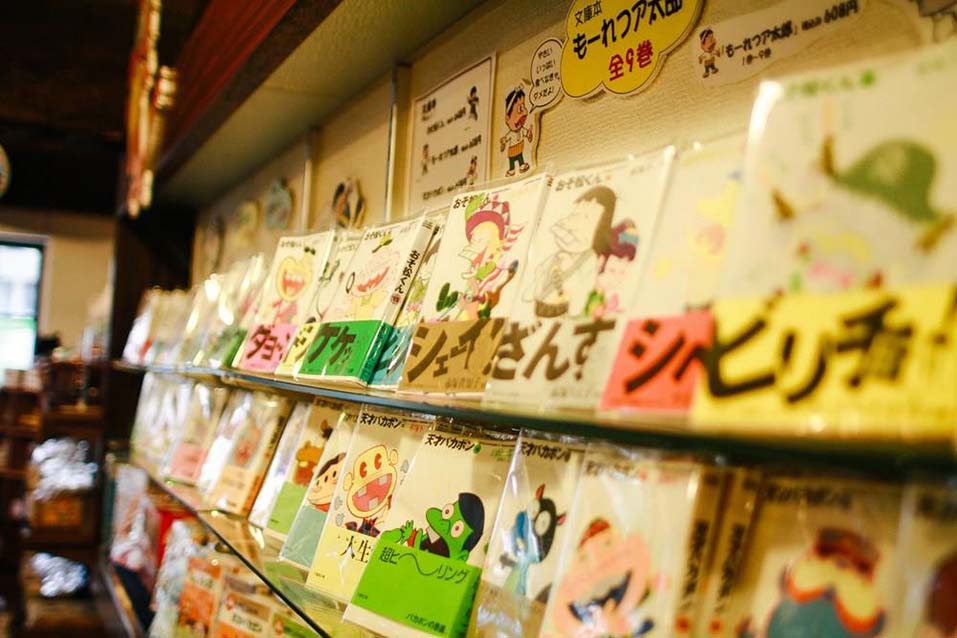
Original artworks and personal belongings
Akatsuka Fujio was an extremely important manga artist during the Showa era in Japan and a renowned comedian. His famous works include 'Koma-chan' and 'The Genius Bakabon's Dad.' Even the sweet and delightful cartoons I watched in my childhood, like 'Sweet Sea Sweet,' were his creations. This museum houses a vast collection of his original artworks and personal belongings. If you can read Japanese and have a passion for manga, it's definitely a treasure trove.

The Showa Retro Commodity Museum
The Showa Retro Commodity Museum is also well worth a visit.
A museum of nostalgic items from the Showa era in Japan, acclaimed as a treasure trove of B-grade culture in Japan.
You can personally witness what stationery looked like back in the days your grandparents spoke about, see movie posters from that time, and reminisce about the past through vintage posters that have aged gracefully.
A museum of nostalgic items from the Showa era in Japan, acclaimed as a treasure trove of B-grade culture in Japan.
You can personally witness what stationery looked like back in the days your grandparents spoke about, see movie posters from that time, and reminisce about the past through vintage posters that have aged gracefully.
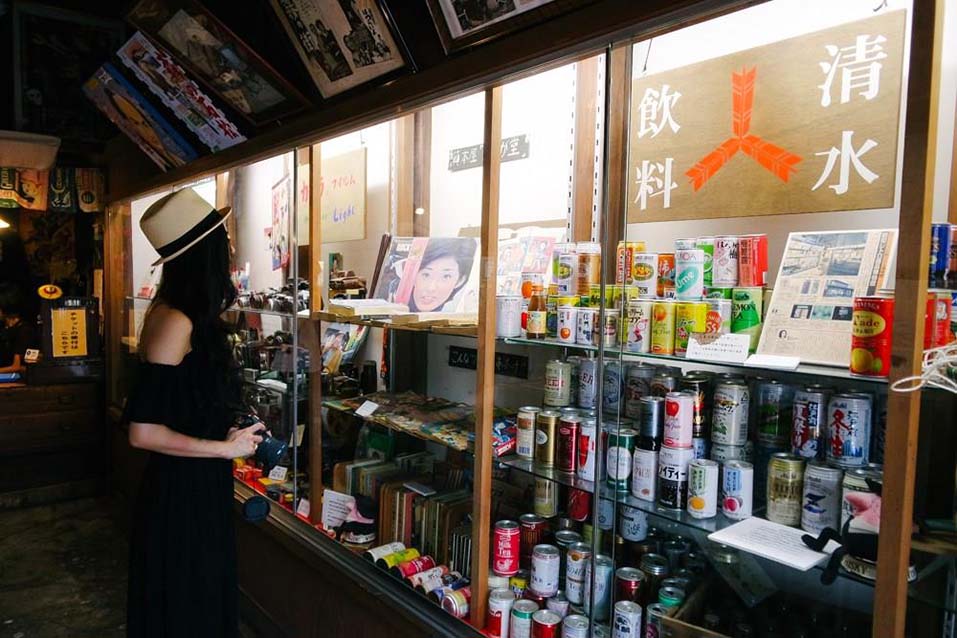
The progress and changes of time can strongly impact you
Here, the progress and changes of time can deeply impact you. My grandfather, who once lived in Japan, would likely be moved to tears seeing these things.
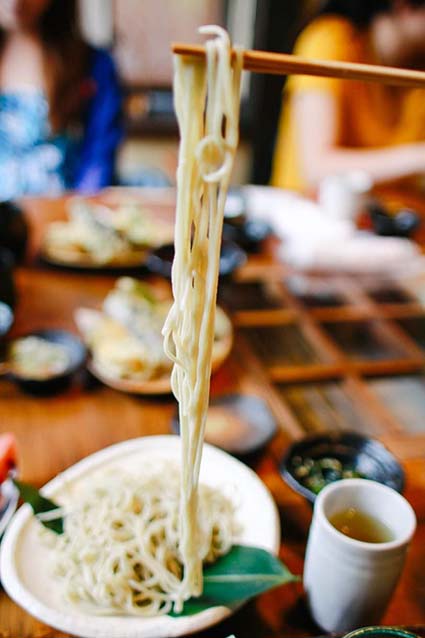
Lunch soba noodles
Based on my previous experience, I knew that mountain vegetable dishes would be impressive.
Without hesitation, I chose the wild vegetable tempura soba noodles.
Without hesitation, I chose the wild vegetable tempura soba noodles.

Going to the destination from today
The maple leaves along the way haven't turned red yet. If autumn arrives, the scenery will surely be breathtakingly beautiful. I couldn't resist capturing the natural colors of summer, leaving behind a little impression of the season.
I recall something written by Zhang Weizhong in one of his books. Going to the destination from today. This trip to the outskirts of Tokyo can be explained in Chinese as a day’s journey. Within a day, it felt like I had ventured away from the familiar and arrived in a distant land.
But if expressed in Japanese, it would be 'Confirming a journey on this day, moving towards the goal.' Because in Japanese, '一日' does not necessarily refer to a journey within a day; instead, it carries a highly contemplative meaning, representing a specific day, a new moon, or the atmosphere of leisurely passing the day (within a day). The double entendre of '一日遠方' works well in both senses. (laughs)
I recall something written by Zhang Weizhong in one of his books. Going to the destination from today. This trip to the outskirts of Tokyo can be explained in Chinese as a day’s journey. Within a day, it felt like I had ventured away from the familiar and arrived in a distant land.
But if expressed in Japanese, it would be 'Confirming a journey on this day, moving towards the goal.' Because in Japanese, '一日' does not necessarily refer to a journey within a day; instead, it carries a highly contemplative meaning, representing a specific day, a new moon, or the atmosphere of leisurely passing the day (within a day). The double entendre of '一日遠方' works well in both senses. (laughs)

